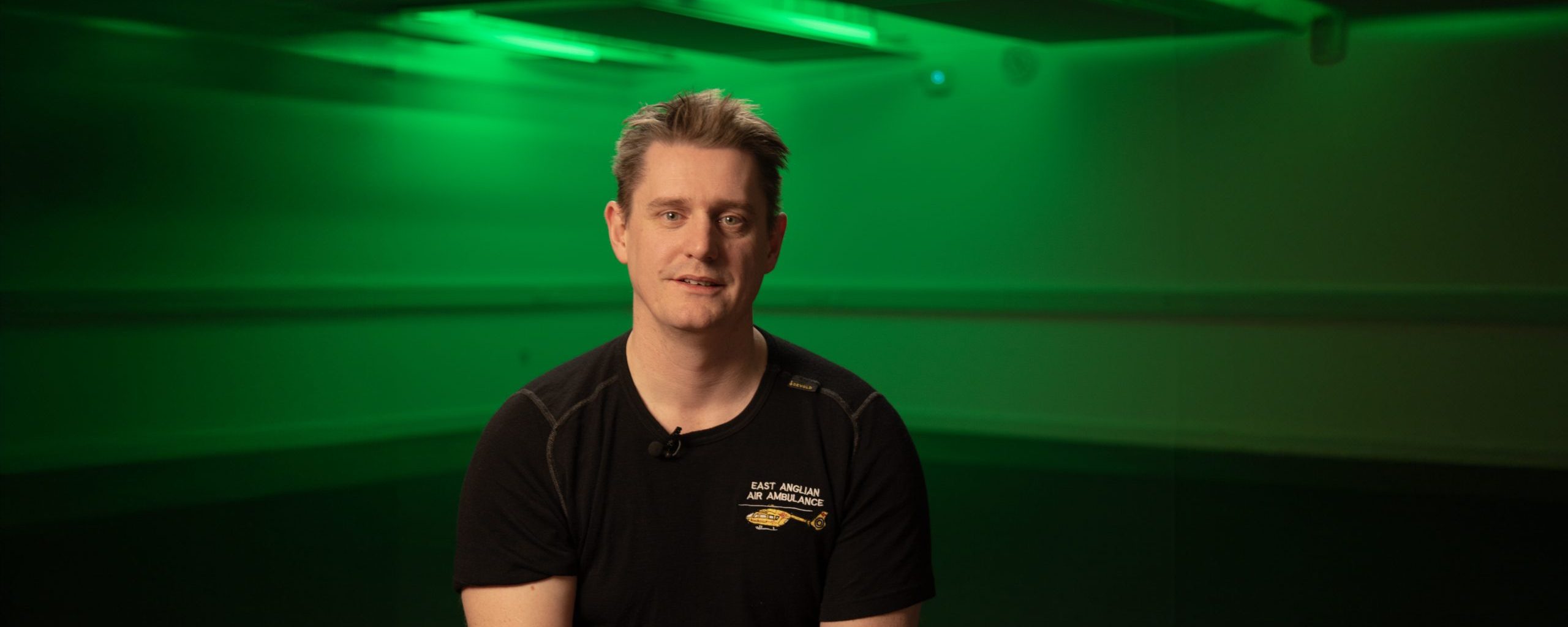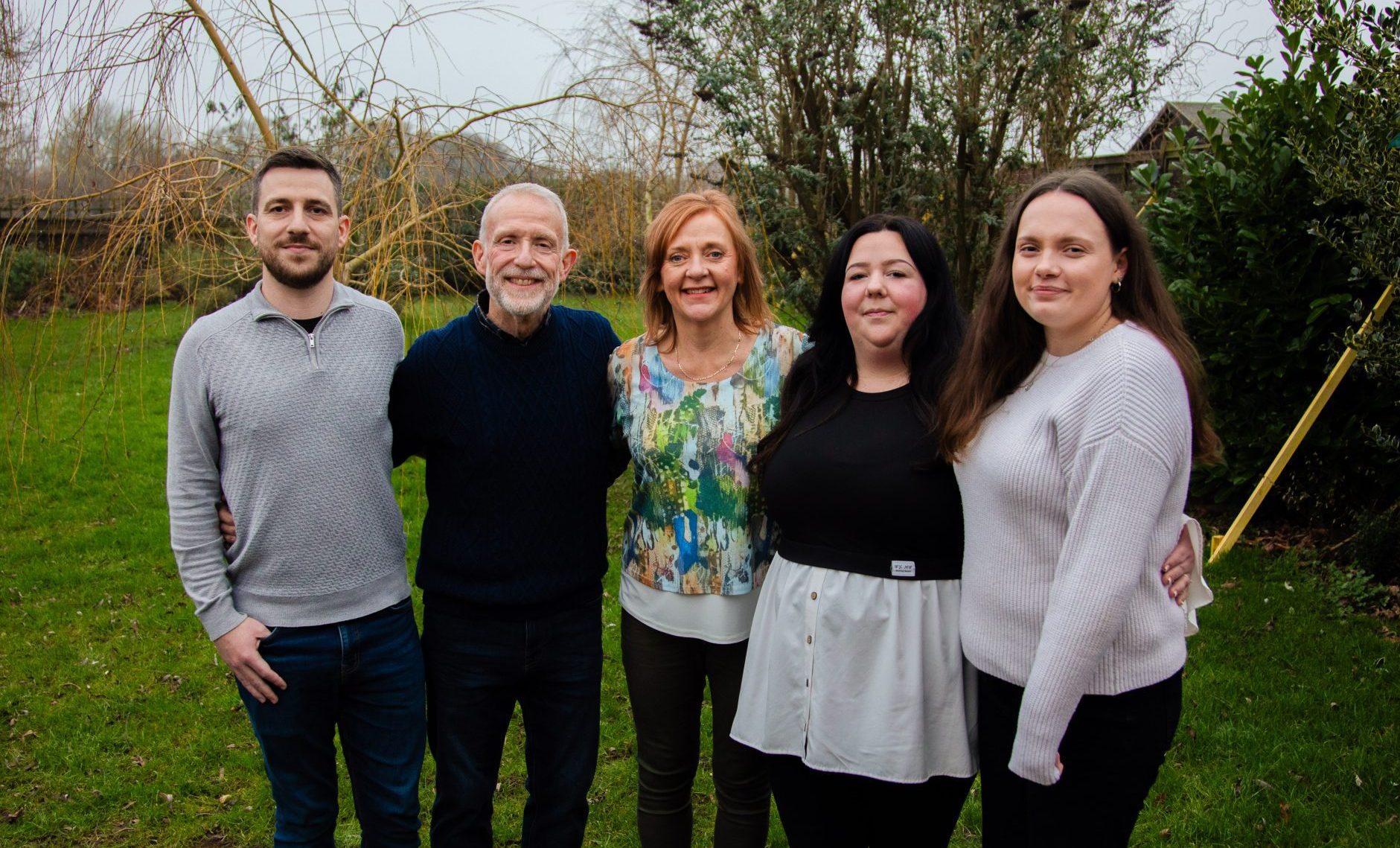Ian and Wendy's Story
It was the night of October 18, 2023. Ian and Wendy Gausden, from Stowmarket in Suffolk, had returned home from holiday a couple of days before. That evening, they had attended a Samba band rehearsal, somewhere they had been going each Tuesday for twelve years. Ian, aged 58 at the time, had remarked that he felt quite tired as it had been a busy day. He went to bed as usual and a short time later, at around midnight, Wendy awoke to Ian making “horrible breathing sounds.” He was in cardiac arrest.
Approximately one in four of the people treated by East Anglian Air Ambulance (EAAA) have suffered a cardiac arrest, a life-threatening emergency where every second counts.
“I knew instantly that something wasn’t right,” Wendy explains.
Wendy got Ian onto the floor, called 999 and commenced CPR, supported by the emergency call handler. The flat surface of the floor made it easier to perform effective chest compressions on her husband.
“It was exhausting,” Wendy says. “I was also on my own, which meant I couldn’t leave Ian to fetch a defibrillator.”
Wendy performed CPR for 18 minutes until a Community First Responder and three land ambulances arrived and took over. In the meantime, EAAA had been tasked by air. The Anglia One (Norwich) crew of Dr Toby and Critical Care Paramedic Luke brought hospital-level treatment and care directly to Ian’s side. This included using a LUCAS machine, which gave Ian good quality, consistent chest compressions.
“Ian had no previous heart conditions, and this really was out of the blue. I thought we had lost him. He was given six shocks from a defibrillator by the emergency services.” Wendy adds.
The EAAA crew put Ian into a medically induced coma, to ensure that he was in no pain. He was then put on a ventilator at scene to take over his breathing. Ventilating someone means that the crew can ensure the patient is getting oxygen to their brain.
Dr Toby and CCP Luke identified that Ian was not ventilating adequately. By using a point of care ultrasound, they found that his lungs were not inflating as they should. There was a build-up of air between the lung and the chest wall. They needed to decompress the left side of Ian’s chest to help ventilate him adequately using a procedure called a Thoracostomy. Although this helped, the crew soon realised that Ian needed this intervention conducted on the other side of his chest as well. After carrying out these two surgical procedures, Ian began to ventilate well, but it was essential that he was then taken to hospital quickly

Due to the narrow staircase in Ian and Wendy’s home, the fire and rescue service helped to get him down the stairs in a stretcher so he could be flown to the Norfolk and Norwich Hospital for further treatment. He was in a critical condition and the EAAA crew advised Wendy to phone family as soon as possible to let them know the severity of the situation. It was around 3.30am when Wendy and the couple’s family arrived at the hospital. Ian was assessed and admitted to Intensive Care. His family were advised that Ian would likely be sedated and on a ventilator for a few days.
“However, to everyone’s amazement, the following morning Ian’s vital signs were good, and he was taken off the ventilator,” Wendy says.
“While my memory was very hazy due to medication, everyone was amazed that I was able to say hello,” Ian explains. “Wendy saved my life by performing immediate and effective CPR. This started a chain of events and kept my brain function while the emergency services were on the way.”
Ian learned he had one blocked artery and two compromised arteries, which had caused a heart attack and that had quickly led to his cardiac arrest. Four weeks later, he underwent triple bypass surgery at Papworth Hospital. He recovered well but says it was challenging at times.
“I was lucky that I had suffered no impairment after the cardiac arrest, but when the realisation hit me about what had happened it was a bit of a shock, and I needed time to take it all in. Now, it has made me more resolved to make the most of this extra chance I’ve been given,” Ian says.
The survival rate for people who suffer an out of hospital cardiac arrest is currently in the region of 8%.

You never expect it to happen to you. The chain of survival fell into place that night, but the person who had it the hardest was Wendy - the impact of incidents like this on partners and loved ones is huge.

— Ian
Several weeks after the cardiac arrest, Wendy and Ian reached out EAAA’s Aftercare service. “One of the Aftercare clinicians visited us at home, and this was so beneficial,” Wendy says. The team of dedicated clinicians provide emotional support and practical information in the difficult aftermath of life-threatening emergencies attended by the EAAA crew. “Lisa explained everything clearly; what had happened and the timeline of events, which helped to clarify my blurred memories.”
The Aftercare team also arranged a visit to Helimed House, EAAA’s Norwich Headquarters, so Wendy and Ian could meet and thank the crew who attended them and help to fill in some of the gaps.
Ian says that, before his incident, he always thought the air ambulance was for speed of transport to hospital, “but I now realise it’s also to get advanced equipment and medication directly to the patient’s side, along with the expertise of a highly skilled crew. I can’t ever say thank you enough.”
Wendy believes that the stars were aligned that night with the chain of survival slotting into place. Now, they both want to give back to the community by raising awareness of the importance of CPR by volunteering to help others learn this life-saving skill.
“I often think about all the things I would have missed if the outcome had been different, like spending time with our family, seeing my daughter get married, and having a future with Wendy doing all the things we love, such as walking our dogs and enjoying holidays in places like the Lake District,” Ian says.
“EAAA donors and fundraisers give families a chance. Loved ones can be saved and that really is the biggest gift. For that I am truly grateful.”
